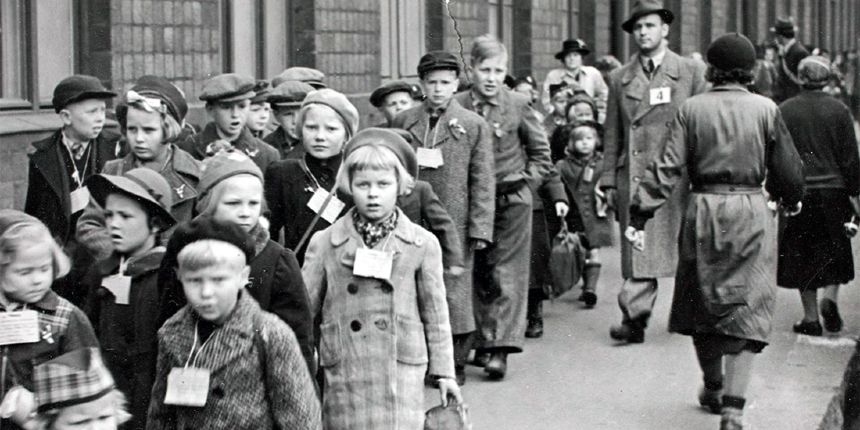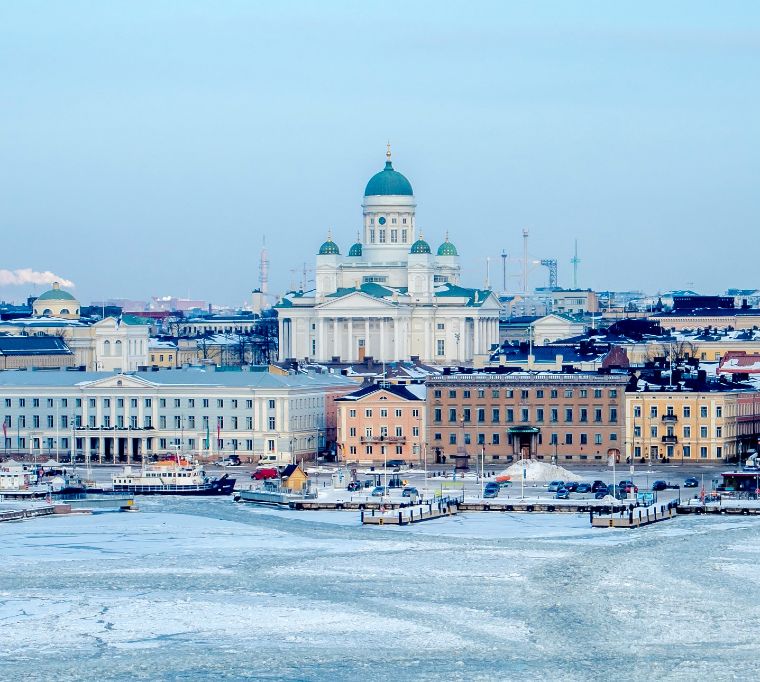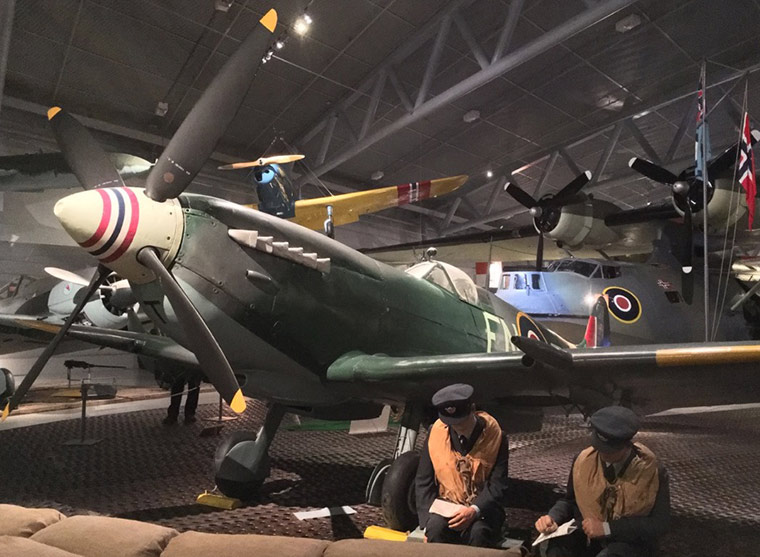
Heart-breaking images of children in refugee camps in Greece and Syria remind us of how war is driving children to flee their homes. Minors are being sent off to foreign countries. But this also happened in Norway’s neighbouring country of Finland during World War II.
It has been 80 years since the end of the Winter War in Finland. Most Norwegians are unaware that there was a dramatic evacuation of war children to other Nordic countries.
Finland experienced three wars from 1939-1945: the Winter War, the Continuation War and the Lapland War, during which 80,000 children were torn from their roots and sent abroad. The largest recipient country was Sweden, but Denmark and Norway also took in children.
Finnish war children in Norway
Norway received 100 children. Author Sigrid Undset opened her home to three Finnish siblings.
The mass evacuation of children, travelling with name tags around their necks, took place by train via Haparanda, a locality in northern Sweden on the border with Finland, or by boat from the Finnish city of Turku to Stockholm. While most children came to live with Swedish foster parents, some were placed in orphanages.
Read more: World War II in Norway
The Ministry of Social Affairs in Finland was responsible for the transport, and the evacuation happened under the auspices of the Mannerheim League for Child Welfare.
On the Swedish side, Centrale Finlandshjälpen (Central Finland Assistance) played an important role. The organisation consisted of several groups, including the Red Cross, Save the Children, the Salvation Army and a number of smaller organisations. Who were these children?
The mass evacuation of children, who travelled with name tags around their necks, took place by train via Haparanda or by boat from Turku to Stockholm.
They were primarily children from families whose father or mother had been killed or disabled in the war. Priority was also given to families with many children who had lost their homes in the bombing, where the mother was single or ill, or the mother’s efforts were necessary in the war industry or in the reconstruction.

The majority of the children came from Karelia, the area that the Soviet Union had conquered, and from the capital area of Finland.
Working class families, very young children
The evacuation also had a distinct social profile, since 60 per cent of the children came from working class families. Most were under the age of ten, and the largest age group was between five and eight years old. Children as young as ten months were sent to Sweden alone.
Read more: A Brief History of Norway
After the war, 15,000 Finnish children stayed in Sweden. Nearly 4,000 were foster children in Swedish homes, and more than 400 were adopted by Swedish parents. Children who remained in Sweden were either orphans, homeless or there was illness in the family. Difficult family finances, baby booms or stressful home conditions could also be causes.
For a long time the question was too sensitive for closer investigation in Finland.
According to surveys, the frequent changes of environment and language led to major mental health problems for some of these children. Some children were returned from Finland since they were unable to readjust in their home country. They had forgotten the Finnish language, and had integrated well into their host families.
Not only children, but also many of their Swedish foster parents were distressed during the separation from the children and their return home to Finland. What happened to these children?

50 years later, the truth emerges
For a long time the question was too sensitive for closer investigation in Finland. It was tacitly accepted that sending the children away was the best solution in a difficult war situation. Modern child psychology was not the main consideration during the war, when Finland’s survival as a nation was the primary goal. The problem was silenced until the Soviet Union dissolved in 1989.
By then, 50 years had passed since the beginning of the Winter War, and several war children spoke up about their experiences in the media. They related heart-breaking stories about how children from poor communities were sent to well-off Swedish foster families. They were well cared for, and learned the Swedish language.
Any negative mention of the children’s evacuation was banned in 1942.
Over the years, the children forgot their mother tongue of Finnish. After the end of the war, they were sent back to abysmal conditions in an impoverished Finland. They were no longer able to talk to their parents, and they felt like strangers in their own homes.
Propaganda and censorship
During the war, the authorities in Finland used propaganda to encourage children to be sent out of the country. They appealed to mothers to participate in the reconstruction efforts since the men were in the war. They explained what a privilege it was for the children to grow up in Sweden, where they could eat their fill and escape the dangers of war.
When newspapers criticised the child transfer, the Finnish authorities censored the articles. Any negative mention of the evacuation of the children was banned in 1942.
Nevertheless, the evacuations involved almost 80,000 individual stories. Some of the evacuees fared better, some worse.
Read more: The Heavy Water War
Some children had a luxurious life, others lived more modestly. Some grew up as the only child, others had siblings in the foster family.
Many of the war children subsequently suffered mental health problems, alcoholism, feelings of rootlessness and failure. Yet this was not the case for all of them, and many of the war children have done well. One of them is Finland’s first female president, Tarja Halonen.
This article was first published on Gemini, and has been republished here with kind permission.

